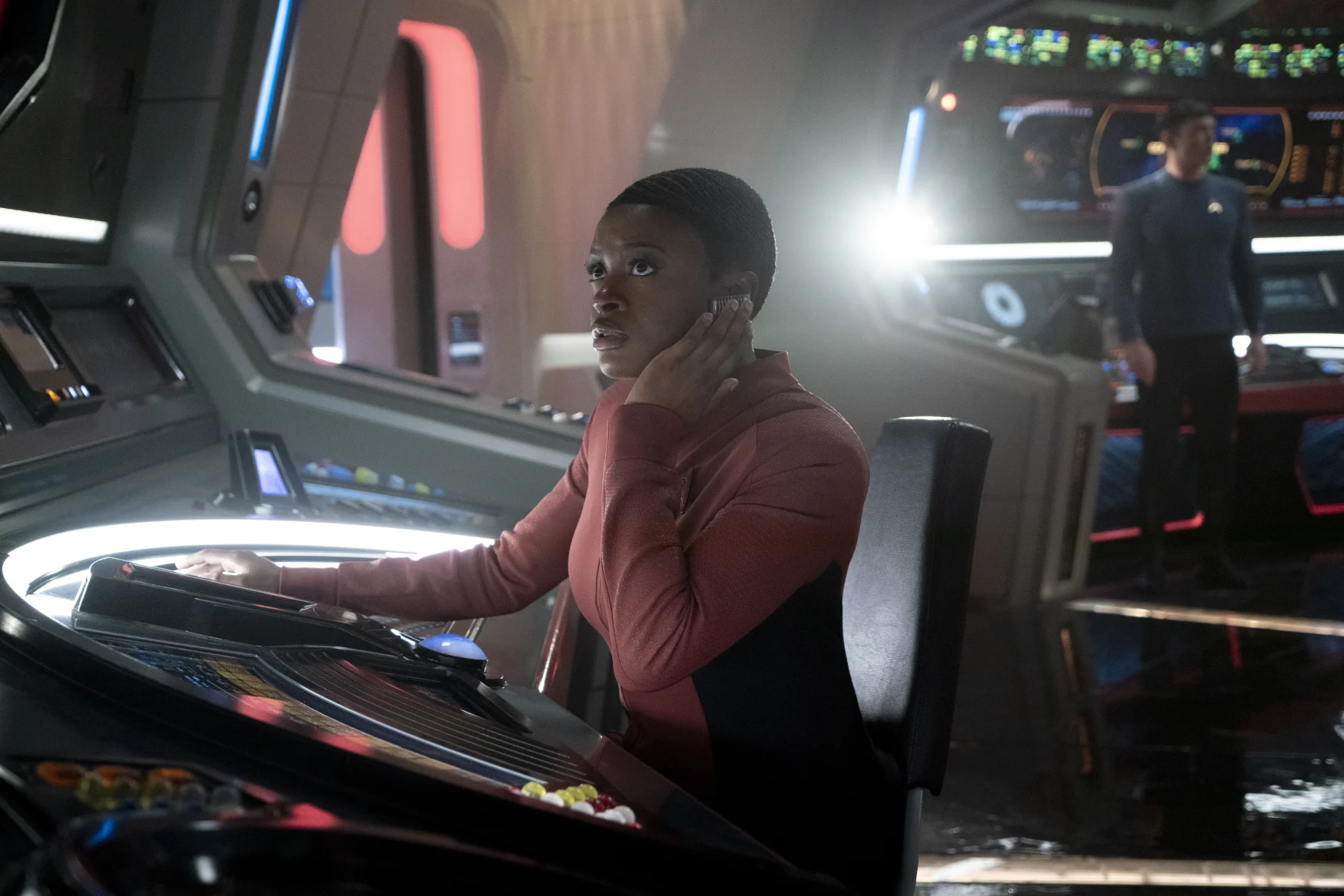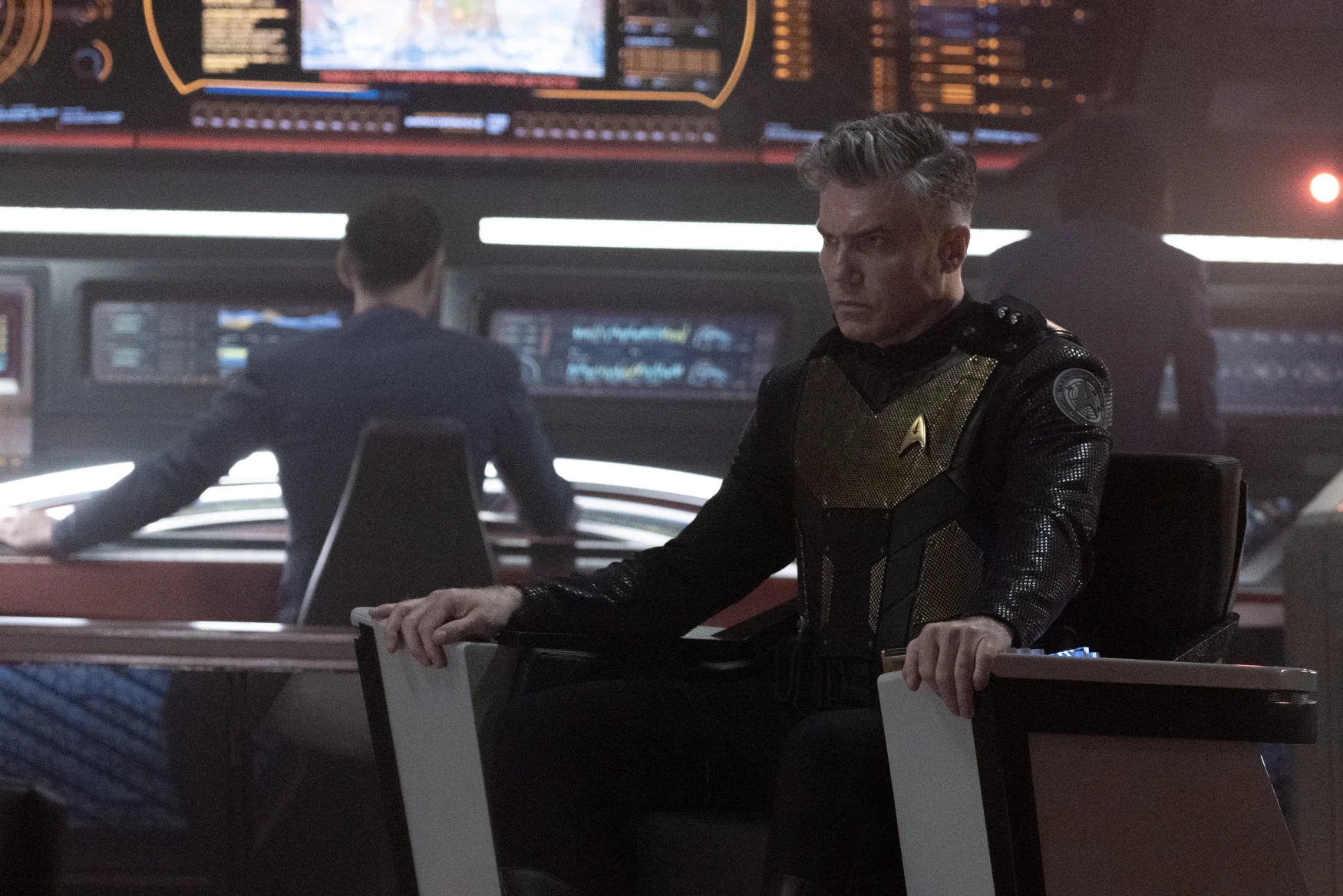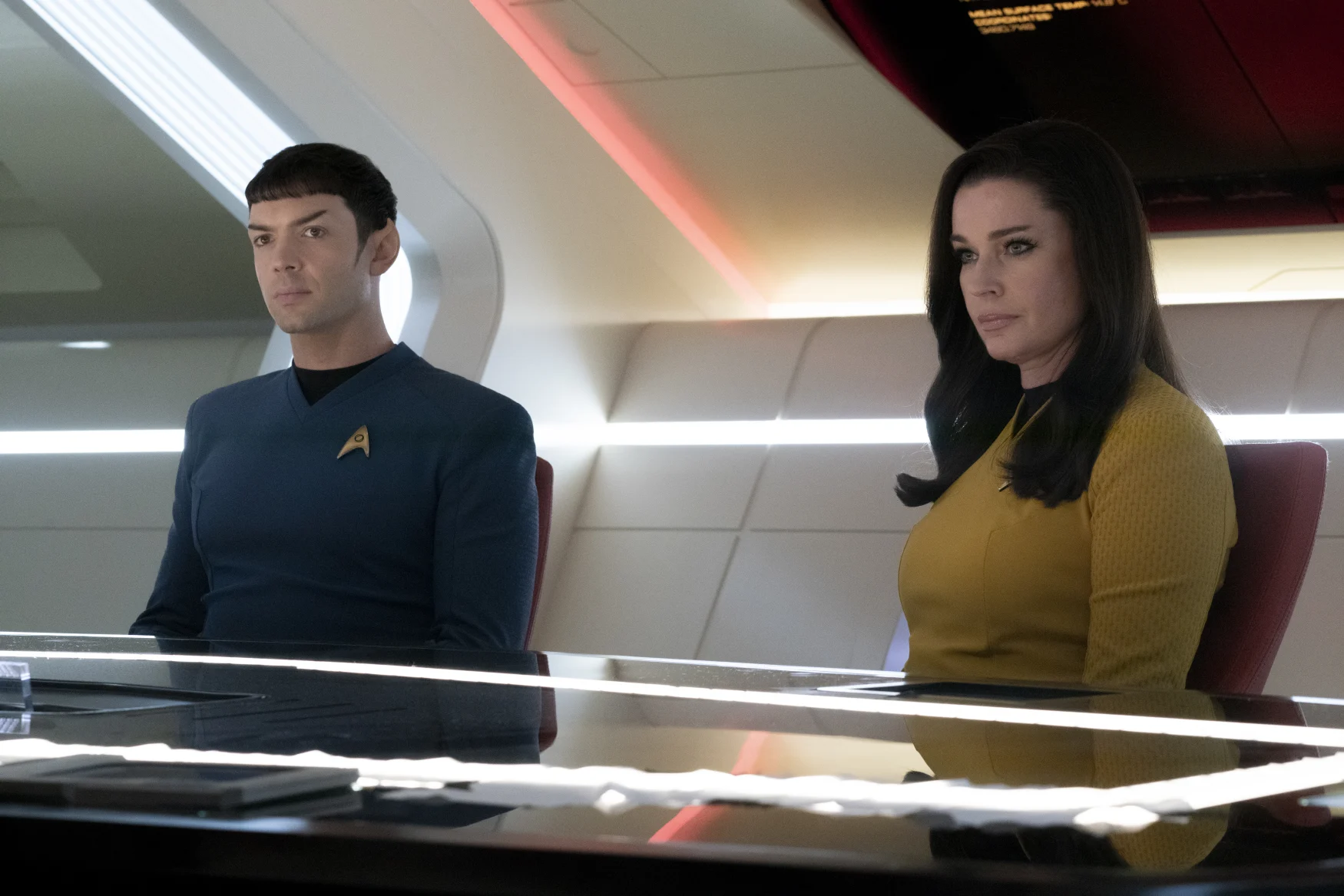Nine thoughts about Star Trek: Strange New Worlds’ blockbuster finale
The following article discusses spoilers for “Hegemony” and Star Trek more generally.
1. Bloody hell. I’ve repeatedly said that Strange New Worlds exudes a special sort of confidence this season. The cast and crew are working as a seamless whole, knowing that the conviction at which you sell is just as important as the quality of what’s being sold. The team has raised their floor and ceiling in equal measure, and even the worst episode was bad because of what it said, not because of how it said it. “Hegemony,” is a finale that, aided by the early commission of season three, acts as one part victory lap and one part set up for what follows.
2. The powers that be at Paramount didn’t signal ahead of time that this episode would end on a cliffhanger. In fact, Henry Alonso Myers’ screenplay is a brilliant feint, suggesting the episode will wrap up on a satisfactory, if brisk, ending before the rug pull in its final moment. You’d be forgiven for not noticing the different transporter energy when the survivors were beamed away on your first watch. Myers’ script and Maja Vrvilo’s direction is permeated with a low-level feeling of dread that suits the needs of both the Alien-esque horror and the raised-stakes of a finale.
3. Strange New Worlds has been smarter about setting up and paying off its threads than you might expect. “Among the Lotus Eaters” saw Ortegas feeling sidelined after getting bumped from an away team which forced her to accept her role as the ship’s pilot. Here, she finally gets her wish to go on a mission, but her initial enthusiasm is sapped when she realizes she’s more or less out of her depth. Her scene with Dr. M’Benga, where she admits she’s leaving the role of action hero to the captain, underscores this. The fact she’s one of the crewmembers taken by the Gorn at the end adds a darker weight to her finally getting her wish granted.

Subscribe to the Engadget Deals Newsletter
Great deals on consumer electronics delivered straight to your inbox, curated by Engadget’s editorial team. See latest

Please enter a valid email address
Please select a newsletter
By subscribing, you are agreeing to Engadget’s Terms and Privacy Policy.

4. Montgomery Scott’s voice-only cameo in last season’s finale was a neat hat-tip to fans with a basic fluency for Star Trek. I guess it was just too tempting not to follow up on that this time, with Martin Quinn as the young engineer. It’s gratifying to see an actual, Paisley-born Scot playing the role, and an amusing fact that he’s the second actor – after Simon Pegg – who has paid their dues playing roles in various British comedy shows. If Quinn hangs around, I can’t wait for Trek completionists to watch Limmy’s Show and Derry Girls to watch his early work, much like when I watched Brent Spiner on Cheers and Night Court.
5. I don’t want to harp on about the limitations a prequel imposes, because we all know the score now. It may bend the edges of Trek’s established narrative but Strange New Worlds can never escape its eventual destination. Young Kirk, Young Spock, Young Uhura, Young Chapel, Young Scotty and Young Dr. M’Benga will all be here, around and alive, to turn into their 1966 counterparts. You can’t put any of those characters in jeopardy, or base your episode around asking that question, because we already know who is safe.
That’s why the emotional beats of Spock’s dramatic rescue of Chapel worked perfectly, but asking the question of her survival did not. The show was smart enough to only leave the issue lingering for the first act before we saw Chapel working to stay alive. (Notice she also gets to do an EVA in a proper spacesuit after her emergency leap in “The Broken Circle.”) But I can only speak as a “fan” so maybe it worked better for those mainstream viewers who have made Strange New Worlds one of the biggest shows on streaming TV.

6. Back in the ‘60s, Pike and Kirk were the same character with the serial numbers filed off, both drawn from the same template of rugged mid ‘60s masculinity. Two-fisted thinking men of action as comfortable on the back of a horse as they were quoting poetry or discussing naval history. This lack of distinction wasn’t really an issue back then, or even now, until Strange New Worlds made the conscious decision to let Kirk lurk on the periphery of Pike’s narrative.
It meant the production team needed to retrofit Pike as different from his successor, helped by Anson Mount’s gravitas and easy charm. And the first season finale made it clear that Pike’s reluctance to shoot first and ask questions later was his tragic flaw. One that Kirk didn’t have, which made him a better leader to take the Enterprise on its next set of missions. But Anson Mount’s paternity leave and reduced shooting schedule meant there wasn’t time to examine the fallout from “A Quality of Mercy” in any detail.
After all, he now knows his desire to find a peaceful solution single-handedly started a war that wiped out the Federation. He also knows he has to remain true to his principles or else he could pollute the timeline and not be in the right place to save future Spock’s life. The fact he’s unable to make a decision in the cliffhanger is entirely congruent with the journey Pike has been on, but it’s clear the steps leading to this moment would have been explored far more had Mount been available.
“Hegemony,” then, is the show’s first real chance to look at how Pike has tried to grow into Kirk’s mold, despite how ill-fitting he finds it. In his first talk with Admiral April, he advocates a policy of shooting first, but not long after he’s thinking about trying to find a peaceful solution. It’s those two competing urges that paralyze Pike in the finale, knowing there are lives on the line whatever he does. But, again, you have to praise the production team for trusting the audience will keep up with what happened in the previous season.
7. It’s not great that Strange New Worlds can only do so much to put clear water between Pike and Kirk. You can’t make Pike look too old-fashioned or useless without alienating him from the audience, especially given his forthcoming ultimate sacrifice. But go too far the other way and you make Pike a dove in comparison with the more hawkish Kirk which, to me, feels like the wrong message to be sending.

8. It’s hard to know how long Strange New Worlds will run for, or what the plans are for its future. You could easily argue it never needs to end so much as just swap out characters until you’ve rebuilt the 1966 ensemble. Every generation of Paramount executives harbors a desire to get a do-over on Kirk and Spock in the hope their name recognition alone will carry a series.
But I’m curious if that’s something people would actually want? I’m not sure I do, but then my dream would be an original series set in Trek’s present with no legacy characters at all. And I know that’s something of a minority opinion compared to all those folks who want yet another run on the nostalgia treadmill set in the safety of Trek’s past. (If nothing else, at least Strange New Worlds has kept its fan service to a minimum and tried, as best as it can, to set out on its own path.)
9. At the end of my season one finale review, I wrote “Whisper it, friends, but Strange New Worlds might actually be good?” That was a fair line at the time, since the show took a while before clicking into a high gear. Since then, however, more or less every episode has improved upon the last to produce a second season with barely any weak notes. We don’t need to whisper anything now, Strange New Worlds is the best live-action Trek of the streaming era.
